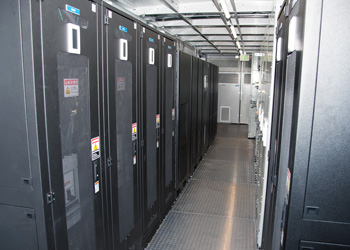
A recent study from the University of Toronto reinforces the growing trend towards easing cooling costs in data centers. The study looks at 12 facilities at three different organizations and finds no correlation between high set points, or base line temperatures, and system reliability. This research compliments a larger collection of information that could push data center managers’ comfort zone for set points from 68 and 72 degrees, to 78 and 80 degrees.
In 2008, Microsoft raised the temperature two to four degrees in its Silicon Valley data center and saved $250,000 in annual energy costs. Google recommends even more drastic increases. “The guidance we give to data center operators is to raise the thermostat,” said Erik Teetzel, an Energy Program Manager at Google. “Many data centers operate at 70 degrees or below. We’d recommend looking at going to 80 degrees.” The University of Toronto study indicates the most important key to reducing failure conditions is not temperature, but temperature stability and effective sensor equipment.
While the team saw no correlation between heat and node outages – they did find a clear correlation between temperature variability and failure. Researchers concluded that running a data center at a consistent high temperature courts more reliability than operating at inconsistent low temperatures. Higher data center temperatures aren’t for every facility, and before making decisions to increase the set point, it’s important to assess the facility’s environment and airflow.
“It can be a painstaking process, but it’s important to monitor the operating temperature of every device in the facility to ensure they’re not being overheated,” says Bob Haden, equipment specialist at Global Power Supply.”
Any solid state device has a critical temperature higher than the temperature it will fail due to thermal runaway.” Google recommends using computational fluid dynamics (CFD) and temperature sensors to develop a better understanding of temperature changes and how air moves through a facility.
“We would oversimplify the problem if we tried to make generalized recommendations or predictions on what exactly data center temperatures should be and how much energy precisely could be saved,” notes researchers from the University of Toronto study. “However, we see our results as strong evidence that most organizations could run their data centers hotter than they currently are without making significant sacrifices in system reliability.”